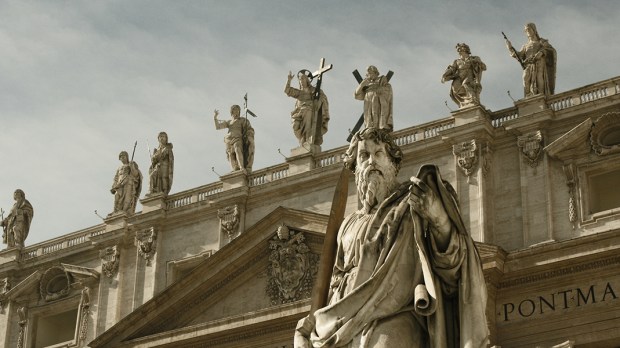It is said, popularly, that every Catholic must make a pilgrimage, at least once in his life, to Rome. But those who visited the Eternal City before the 1500s found a very different Basilica than the one pilgrims admire nowadays.
Built, according to tradition, on the tomb of the apostle Peter, the construction of the current Papal Basilica did not begin until the sixteenth century, following the design of four Renaissance and Baroque geniuses: Donato Bramante, Michelangelo Buonarrotti, Carlo Maderno and Gian Lorenzo Bernini.
Before this magnificent church was built – the most outstanding example of Renaissance architecture, and one of the largest churches in the world – the old Basilica stood in the same place, built in the fourth century during Emperor Constantine’s reign.
The Red Rock and the tomb of Peter.
After the crucifixion, in the second quarter of the first century, the book of the Acts of the Apostles tells how Peter, after having exercised his ministry for around thirty years, and after having lived in Turkey and other regions of the Mediterranean, finally traveled to Rome. In the year 64, during the reign of Nero, Christians were accused of having caused the great fire of Rome, beginning a persecution in which, along with many others, Peter was martyred.
Peter was condemned to die crucified, but he considered himself unworthy to die in the same way that Christ did, so the Romans crucified upside down. In fact, to this day, the inverted cross is known as the “Cross of Saint Peter” in memory of the gesture of humility of the apostle, even at the time of his death.
Peter was crucified near the Egyptian obelisk that was at one end of the so-called “Circus of Nero.” The obelisk had been brought from Heliopolis, in Egypt, by mandate of Caligula in the year 37. It is the obelisk one finds today in the very center of the Piazza, and is considered a “witness” to the death of the apostle. It is precisely the reason why the obelisk is still there, in the middle of the square.
Tradition asserts that Peter’s remains were buried on the outskirts of the Circus of Nero, on Vatican Hill, advancing along the Via Cornelia, a little less than 150 meters from the site of his martyrdom. From that very moment, Christians discreetly visited the tomb of Peter, barely identified by a large red rock, which symbolized both the name of Peter (the “stone” on which the Church is built) and his martyrdom. Thus, the place was then recognized by the Christians who passed by, while at the same time remaining hidden from Roman authorities, in this way avoiding reprisals and further persecution. Years later, a first small church was built there, until, in the fourth century, what we now refer to as the “Old Basilica” was then commissioned.

